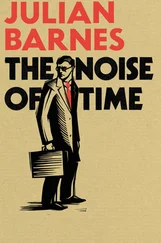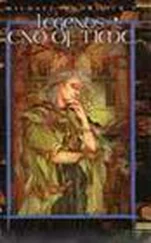DeWitt, B.S., 1967, ‘Quantum theory of gravity’, Physical Review , 160, 1113.
DeWitt, B.S., 1970, ‘Spacetime as a sheaf of geodesics in superspace’, in Relativity , M. Carmeli et al . (eds), Plenum, New York.
DeWitt, B.S. and Graham, N. (eds), 1973, The Many-Worlds Interpretation of Quantum Mechanics , Princeton University Press, Princeton.
Dirac, P.A.M., 1983, ‘The evolution of the physicists’ picture of nature’, Scientific American , 208, 45.
Eliot, T.S., 1964, Knowledge and Experience in the Philosophy of F. II. Bradley , Faber & Faber, London.
Fischer, A.E., 1970, ‘The theory of superspace’, in Relativity , M. Carmeli et al . (eds), Plenum, New York.
Giulini, D., 1999, ‘The generalized thin-sandwich problem and its local solvability’, Journal of Mathematical Physics , 40, 2470.
Halliwell, J. and Hawking, S.W., 1985, ‘Origin of structure of the universe’, Physical Review D , 31, 1777.
Halliwell, J.J., Pérez-Mercader, J. and Zurek, W.H. (eds), 1994, The Physical Origins of Time Asymmetry , Cambridge University Press, Cambridge.
Heisenberg, W., 1930, The Physical Principles of the Quantum Theory , Chicago University Press, Chicago.
Hofman, S.A., Kuchar, K. and Teitelboim, C., 1976, ‘Geometrodynamics regained’, Annals of Physics , 96, 88.
Holland, P., 1993, The Quantum Theory of Motion , Cambridge University Press, Cambridge.
Isham, C., 1993, ‘Canonical quantum gravity and the problem of time’, in Integrable Systems, Quantum Groups, and Quantum Field Theories , L.A. Ibort and M.A. Rodriguez (eds), Kluwer Academic, London.
Kiefer, C., 1997, ‘Does time exist at the most fundamental level?’, in Time, Temporality, Now , H. Atmanspacher and E. Ruhnau (eds), Springer, Berlin.
Kuchar, K., 1992, ‘Time and interpretations of quantum gravity’, in Proceedings of the 4th Canadian Conference on General Relativity and Relativistic Astrophysics , G. Kunstatter et al . (eds), World Scientific, Singapore.
Lanczos, C., 1986, The Variational Principles of Mechanics , Dover, New York.
Lapchinskii, V.G. and Rubakov, V.A., 1979, ‘Canonical quantization of gravity and quantum field theory in curved space-time’, Acta Physica Polonica BIO, 1041.
Liebscher, D.-E., 1999, Einsteins Relativitätstheorie und die Geometrien der Ebene , Teubner, Stuttgart.
Littlejohn, R.G. and Reinsch, M., 1997, ‘Gauge fields in the separation of rotations and internal motions in the n -body problem’, Reviews of Modern Physics , 69, 213.
Mach, E., 1883, Die Mechanik in Hirer Entwickelung. Historisch-kritisch dargestellt , J.A. Barth, Leipzig. (English translation (1960): The Science of Mechanics: A Critical and Historical Account of its Development , Open Court, LaSalle, IL.)
McTaggart, J.M.E., 1927, The Nature of Existence , Cambridge University Press, Cambridge.
Misner, C.W., Thorne, K.S. and Wheeler, J.A., 1973, Gravitation , W.H. Freeman, San Francisco.
Page, D. and Wootters, W., 1983, ‘Evolution without evolution: Dynamics described by stationary observables’, Physical Review D , 27, 2885.
Pais, A., 1982, ‘Subtle is the Lord . . . ‘The Science and Life of Albert Einstein , Oxford University Press, Oxford.
Pinker, S., 1997, How the Mind Works , Penguin, London/Norton, New York.
Poincaré, H., 1902, La Science et l’hypothesis , Flammarion, Paris. (English translation (1905): Science and Hypothesis , Walter Scott, London.)
Poincaré, H ., 1904, La Valeur de la Science , Flammarion, Paris. (English translation (1907): The Value of Science , Science Press, New York; reprinted in 1958 by Dover, New York.)
Schrödinger, E., 1944, What is Life? , Cambridge University Press, Cambridge.
Shimony, A., 1997, ‘Implications of transience for spacetime structure’, in The Geometric Universe: Science, Geometry, and the Work of Roger Penrose , S.A. Huggett et al . (eds), Oxford University Press, Oxford.
Silk, J., 1994, A Short History of the Universe , W.H. Freeman/Scientific American Library, New York, p. 87.
Smolin, L., 1991, ‘Space and time in the quantum universe’, in Conceptual Problems of Quantum Gravity , A. Ashtekar and J. Stachel (eds), Birkhauser, Boston.
Smolin, L., 2001, Three Roads to Quantum Gravity , Weidenfeld & Nicolson, London (Basic Books, New York).
Stachel, J. (ed.), 1987, The Collected Papers of Albert Einstein , Vol. 1, The Early Years, 1879–1902 , Princeton University Press, Princeton.
Tait, P.G., 1883, ‘Note on reference frames’, Proceedings of the Royal Society’ of Edinburgh , Session 1883–4, p. 743.
Vilenkin, A., 1989, ‘Interpretation of the wave function of the Universe’, Physical Review D , 39, 1116.
Walsch, N.D., 1997, Conversations with God — An Uncommon Dialogue , Hodder & Stoughton, London.
Wheeler, J.A., 1964a, ‘Mach’s principle as boundary condition for Einstein’s equations’, in Gravitation and Relativity , H.-Y. Chiu and W.F. Hofmann (eds), Benjamin, New York.
Wheeler, J.A., 1964b, ‘Geometrodynamics and the issue of the final state’, in Relativity, Groups, and Topology: 1963 Les Houches Lectures, C . DeWitt and B. DeWitt (eds), Gordon & Breach, New York.
Wheeler, J.A. and Zurek, W. (eds), 1983, Quantum Theory and Measurement , Princeton University Press, Princeton.
Williams, T., 1951, ‘The timeless world of a play’, in The Rose Tattoo , New Directions Books, New York.
Zeh, H.-D., 1992, The Physical Basis of the Direction of Time , 2nd edn, Springer, Berlin (3rd edn, 1999).
A
aberration 128
absolute distance 74–5
absolute motion 62, 119
absolute rest 126
absolute space 20, 62–3, 83–5, 92, 119–20, 235–7
absolute time 20, 64, 83–5, 92, 119–20
action 111–13
ADM formalism 167, 253
aether 124, 126–8, 130–1, 153
Alpha 42, 46
alpha particle tracks 284–7, 290–6
angular momentum 86–90
anthropic principle 25, 342
antiparlicles 191
Arnowitt, Richard 167
arrow of time 19, 25, 27, 34, 308
Ashtekar, Abhay 351
Aspect, Alain 217
atomic time 107
atoms 24–5, 49
ionization 284–7, 290–6
number in a pea, 46–8
spectral lines 188–9
Augustine, St 11
B
Baierlein, Ralph 175–6
Baker, Dame Janet 332
Banks, Tom 258
Barbour, Julian
collaboration with Bertotti, 113–18, 167–72, 238
Discovery of Dynamics, The 239
website, 5, 7, 345
Barrow, John 341
Bell, John 220–1, 284, 287, 299–302
Bell’s inequalities 221
Berkeley, Bishop 63, 322
Bernoulli, John 110
Bertotti, Bruno 113–18, 167–72, 238
Besso, Michele 163
best matching 116–17, 170–2, 173, 175–6, 236–7
bicycle riding 88
bifurcation 55
Big Bang 12, 46, 251, 317, 320, 321
Big Crunch 263, 317, 321, 328
black holes 38, 166, 319, 320
block universe 143
body, human, as a time capsule 33
Bohm, David 218, 352
Bohr, Niels 13, 188–9, 219
Boltzmann, Ludwig 24–5, 27–8, 34, 342–3
Born, Max 198, 286, 310
Bose-Einstein statistics 191
bosons 191
bound states 234–5
Читать дальше












